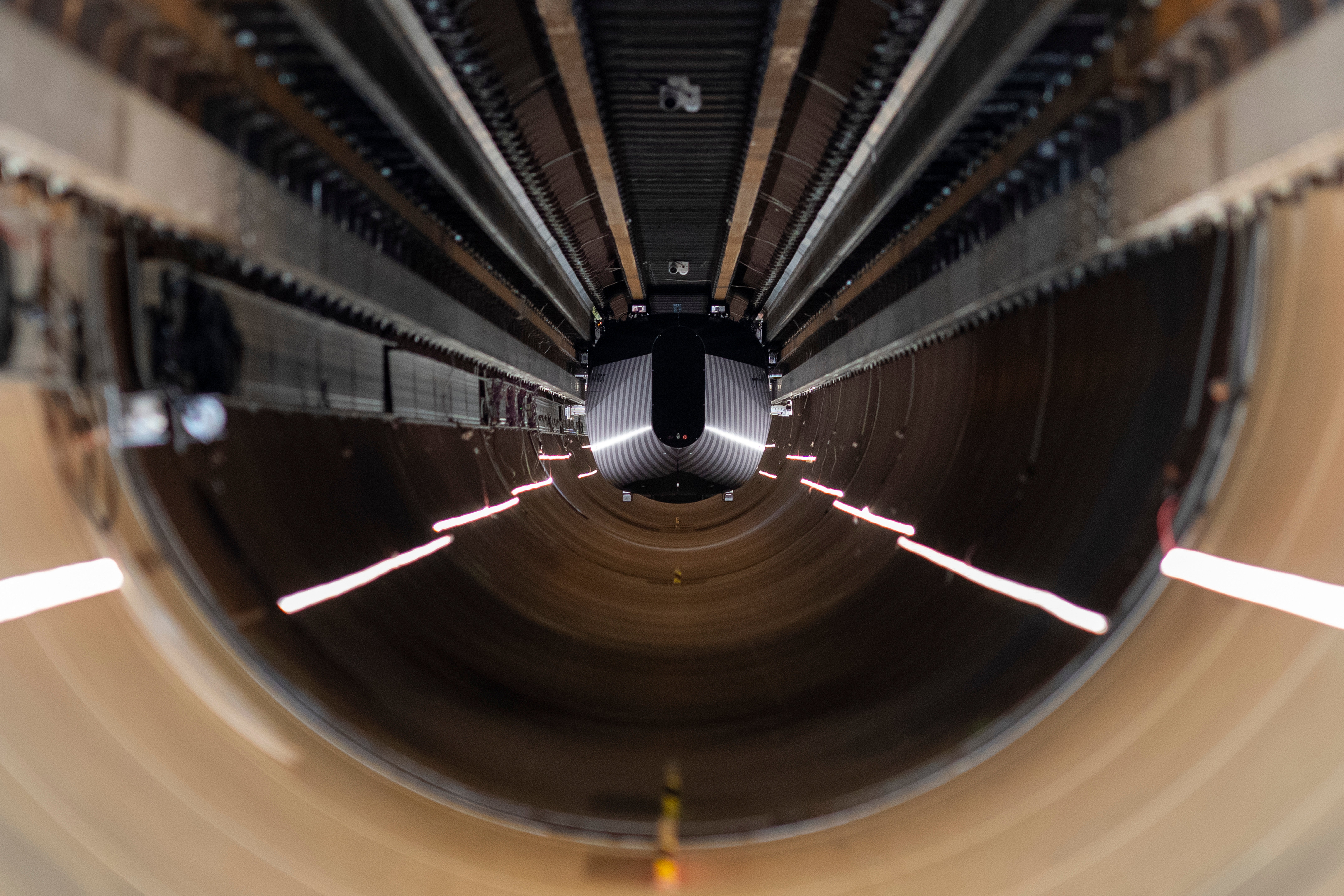Hyperloop: Elon Musk backed futuristic tube transport system takes step forward
Developers aim to have capsules speeding through tubes at up to 700 kph

Your support helps us to tell the story
From reproductive rights to climate change to Big Tech, The Independent is on the ground when the story is developing. Whether it's investigating the financials of Elon Musk's pro-Trump PAC or producing our latest documentary, 'The A Word', which shines a light on the American women fighting for reproductive rights, we know how important it is to parse out the facts from the messaging.
At such a critical moment in US history, we need reporters on the ground. Your donation allows us to keep sending journalists to speak to both sides of the story.
The Independent is trusted by Americans across the entire political spectrum. And unlike many other quality news outlets, we choose not to lock Americans out of our reporting and analysis with paywalls. We believe quality journalism should be available to everyone, paid for by those who can afford it.
Your support makes all the difference.A futuristic form of travel designed to be more efficient than flights, high-speed rail and freight trucks has taken a step closer, according to the company behind it.
Hyperloop, a new form of mass transit involving capsules whizzing on magnetic fields through depressurized tubes, has achieved significant liftoff in the northern Netherlands, a company developing the technology said Monday.
A test vehicle was levitated and zipped through a tube at a testing facility for the high-speed transit system once promoted by Elon Musk. Developers aim to have capsules speeding through tubes at up to 700 kph (435 mph).
“So today, with the first successful test, we were able to levitate the vehicle, also turn on the guidance system and the propulsion system," Marinus van der Meijs, the technology and engineering director at hyperloop company Hardt, told The Associated Press late last week before Monday's formal announcement.
The European Hyperloop Center's 420-meter (460-yard) tube is made up of 34 separate sections mostly 2½ meters (more than eight feet) in diameter. A vacuum pump sucks out the air to reduce the internal pressure. That reduces drag and allows capsules to travel at high speeds.

Backers say it's far more efficient than short-haul flights, high-speed rail and freight trucks, but it will involve significant investment in infrastructure.
So far, in the limited space offered by the test center, the speed has been modest.
Once the capsule was in place in the tube, “we launched it with an acceleration similar to that of a metro, up to a top speed of about 30 kph (18 mph), about 100 meters (more than 300 feet) in the pipe,” Van der Meijs added.
Even so, it's a milestone that required some careful conducting.
“The most difficult things that we are doing now is to test all of these functions together. Levitation, propulsion, guidance, all of those functions we are now capable of executing as an orchestra, making them work together,” said Roel van de Pas, commercial director of Hardt Hyperloop.

Musk first proposed the idea more than a decade ago, suggesting it could shuttle passengers the nearly 400 miles (645 kilometers) between Los Angeles and San Francisco in 30 minutes. Since then, teams around the world have been working to bring the idea to fruition.
“To deliver Hyperloop as a mobility system, we have a very complicated puzzle which requires technology, which requires policy, which requires public-private collaboration, and that is what is needed most," Van de Pas said. "At Hardt, we are ready for passenger operations by 2030.”
Some analysts are skeptical. When the hyperloop test facility opened in March, Robert Noland, distinguished professor at the Bloustein School of Planning and Public Policy at Rutgers University, told The Associated Press that building the necessary infrastructure is too costly, calling it “another example of policymakers chasing a shiny object.”
In 2016, Dubai, in the United Arab Emirates, signed a deal with Los Angeles-based Hyperloop One to study the potential for building a hyperloop line between the city-state and Abu Dhabi, the Emirati capital.
The announcement of the deal took place atop the Burj Khalifa, the world’s tallest building, with a panoramic view of the skyline of the futuristic city-state serving as both a backdrop and a sign of Dubai’s desire to be the first to rush toward the future.
But like many flashy announcements in the city-state, the hyperloop idea faded in recent years with no track being built. Hyperloop One shut down in December.